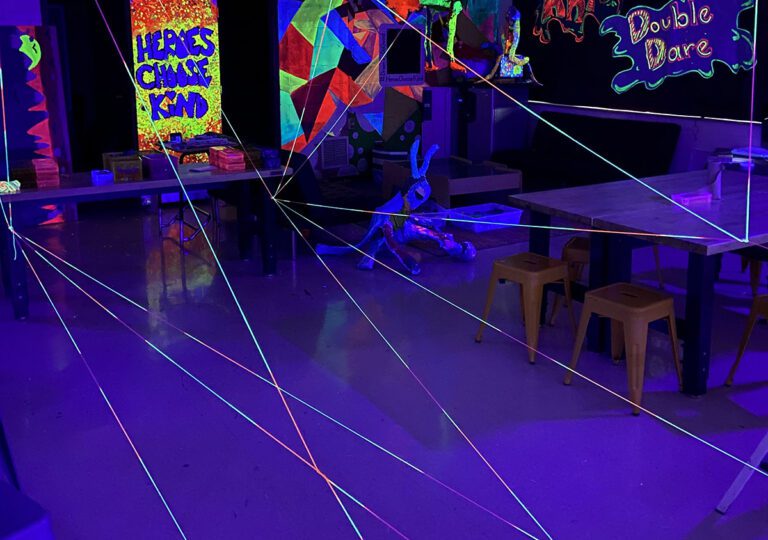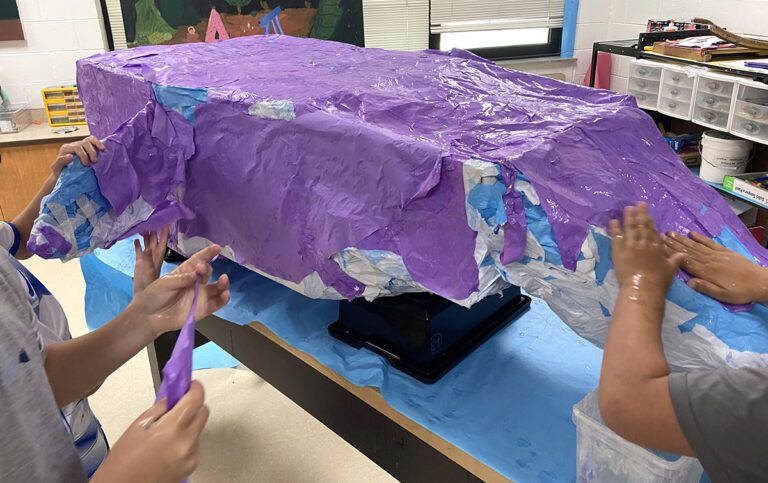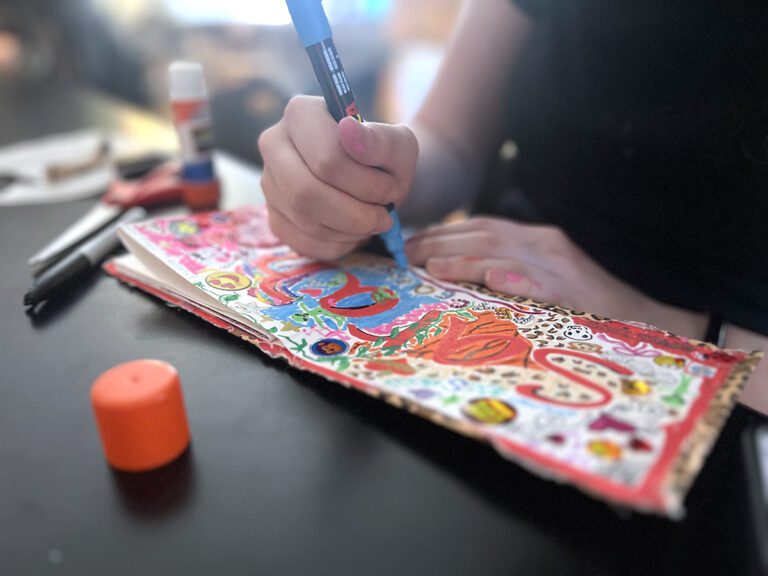Goal setting is a vital skill both in and out of the classroom. There are many goals that students can set for themselves in the art room. They may want to master a new medium, expertly draw a face, or tackle the mysteries of minimalism. Making art about goal setting takes the artmaking and critical thinking process to a whole new level. Visual journals are a safe place for students to track and reflect on their goals.
Today we will discuss goal setting using SMART goals and visual journals with a lesson plan that fuses the two.
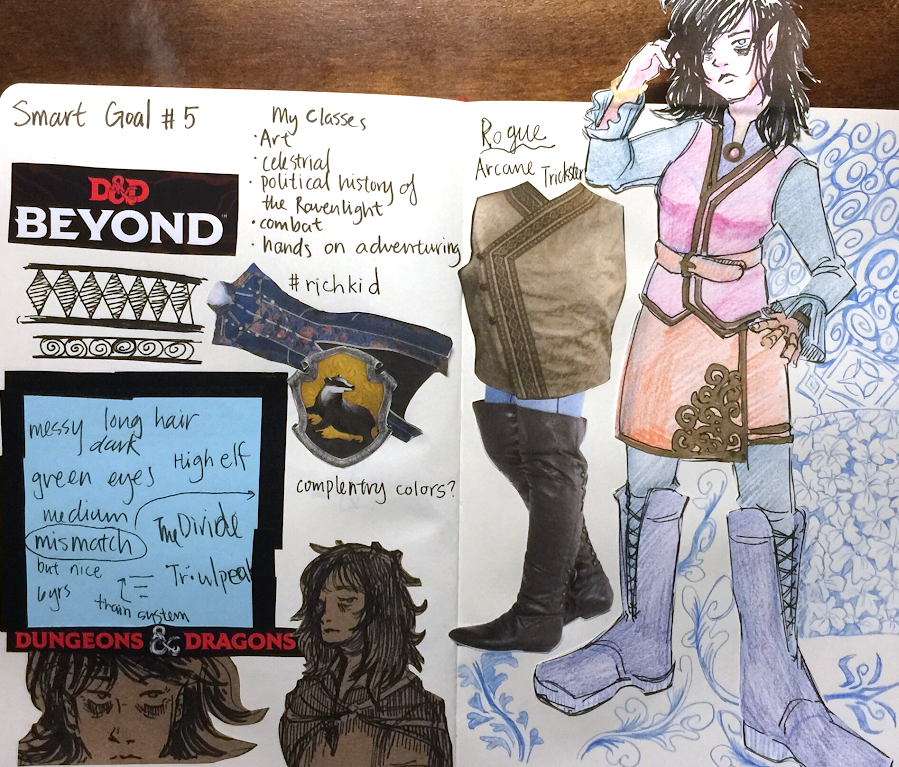
Before we dive into our lesson plan, let’s take a look at SMART goals and visual journals.
What are SMART Goals?
It’s no secret that goal setting improves confidence and promotes strong mental health. There are also many different approaches to goal setting, with some being very involved and others more casual. One approach is SMART goals. With SMART, students use a mnemonic guide to set a personal goal. Through the guide, they assess whether their goal is Specific, Measurable, Achievable, Realistic, and Timely. You know—SMART! Once the goal is set, students write down their goal. According to Forbes, this is a vital step. People who vividly describe or picture their goals are anywhere from 1.2 to 1.4 times more likely to accomplish their goals.
Do you need some more information about SMART goals?
Check out this article about helping students set personal goals. It even includes a downloadable PDF to guide conversations with your students.
What are visual journals?
Visual journals are a middle ground between sketches and finished pieces—more developed than a sketch but not as refined as a final piece. Hidden away in a sketchbook, they are a safe place to experiment with new mediums and new concepts. As for what goes into a visual journal, that is up to the artist. Depending on the prompt provided or what the artist wants to capture, the journal entry may be elaborate, detailed, or filled with different mediums. As stated on SkillShare, “It’s a collection of your feelings, thoughts, and ideas in visual form.”
Want to dive deeper into visual journals?
Investigate how to use visual journals in the Pack Exploring Visual Journals at the Secondary Level in PRO Learning. For a short session with a quicker snapshot, make sure you sign up for the next NOW Conference. If you are looking for lesson plans that connect to standards and intentionally infuse sketchbooks, check out the Collections Visual Journaling and Experimenting with Sketchbooks in FLEX Curriculum.
We also have the following articles to peruse on visual journaling:
- 4 Ways to Use Visual Journaling to Support Advanced Artists
- So, Does Visual Journaling Really Work in Middle School?
- 6 Easy Ways to Incorporate Text in Your Visual Journal
- How to Get Your Students to Enjoy Visual Journaling
- The 10 Best Supplies for Visual Journaling
Let’s look at a lesson plan that combines visual journaling with setting SMART goals.
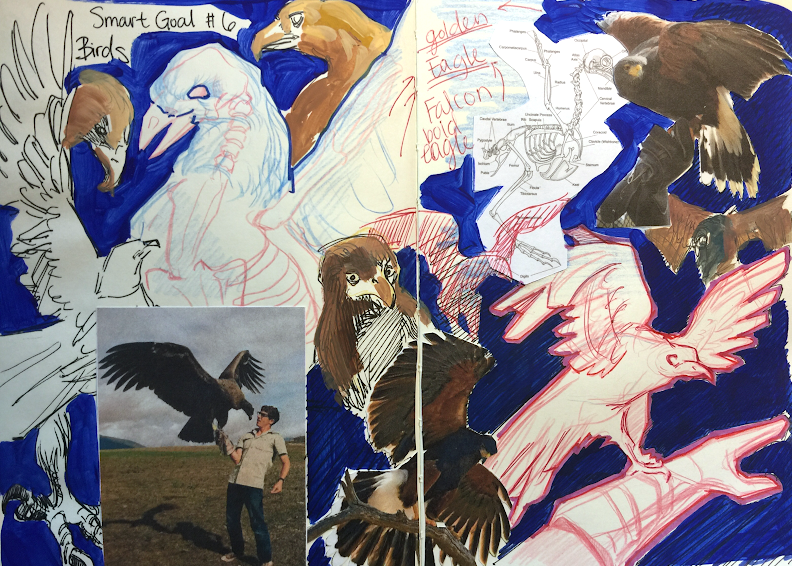
Step 1: Research visual journals.
Before you introduce this challenge to your students, gather several examples of visual journals. Make sure the artists are in your students’ age groups. Visual journals can be daunting for students who have never created one, so it’s helpful to provide a reference point. Share some images with your students and analyze them together. Ask how this is different from a finished art piece or when they are doodling in their sketchbook. Have students identify other mediums used and assess which layouts they prefer.
Step 2: Share visual journal expectations with students.
After analyzing different visual journal approaches, introduce your expectations. Will students be required to use text? Collage? How many pages are needed? How many different mediums? How long will they have to work on their journal entry? Make sure the expectations are written down and easily available for students to reference. You may even want to have them copy or adhere the expectations in their sketchbook.
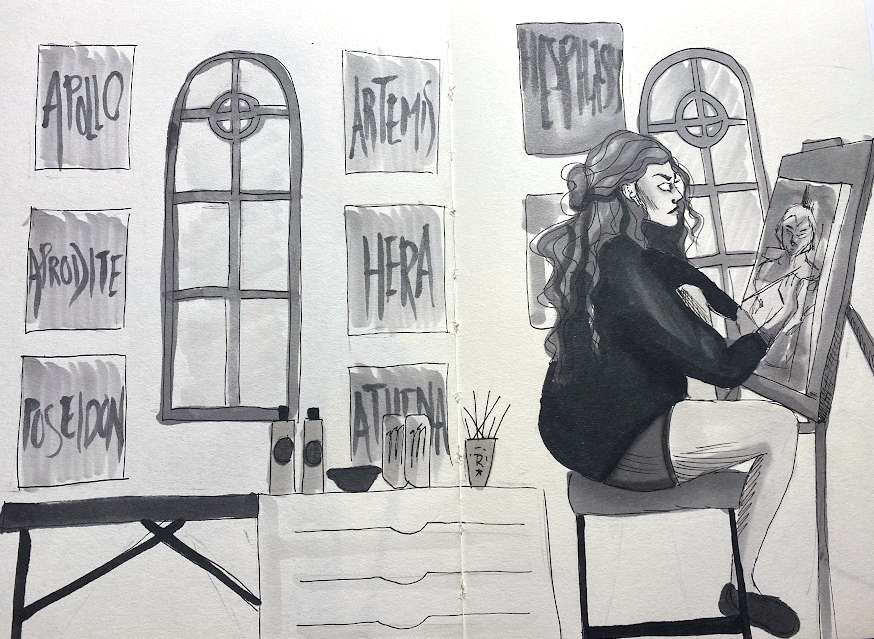
Step 3: Guide students on how to write a SMART goal.
Introduce students to SMART goals. Provide them with plenty of examples, both serious and silly. Make sure you have the requirements for a SMART goal available for students to reference at all times. Once again, you may even want to have them copy or adhere the format in their sketchbook.
Step 4: Students write SMART goals and create in their visual journals.
Now that they are familiar with visual journals, SMART goals, and your expectations for both, it’s time for your students to get to work! Check in with each student as they write their goals and start creating. This is especially important for the first couple of journal entries. Reassure students that visual journals are safe places to experiment. Remind them it’s okay if it’s not perfect.
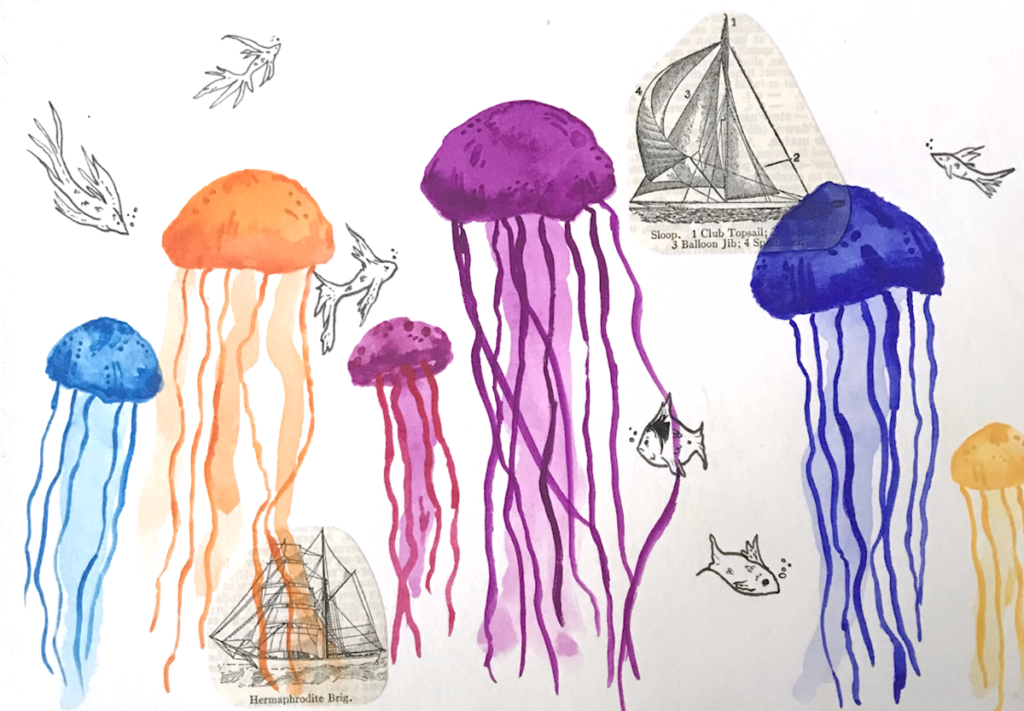
Step 5: Conduct student conferences in lieu of a traditional assessment.
Host conferences rather than have students turn in their journals. The frequency and length of these conferences are up to you. Have a rubric ready to assess the work as you and the student meet for each conference.
Some questions you may want to ask are:
- How do the visuals in your journal align with your goal?
- How did you challenge yourself with your journal entry?
- What is one thing you want to improve about your journal entry?
- What makes you proud?
- What inspired you to set this goal?
- What is something you tried in this journal entry that you want to try in a future art piece?
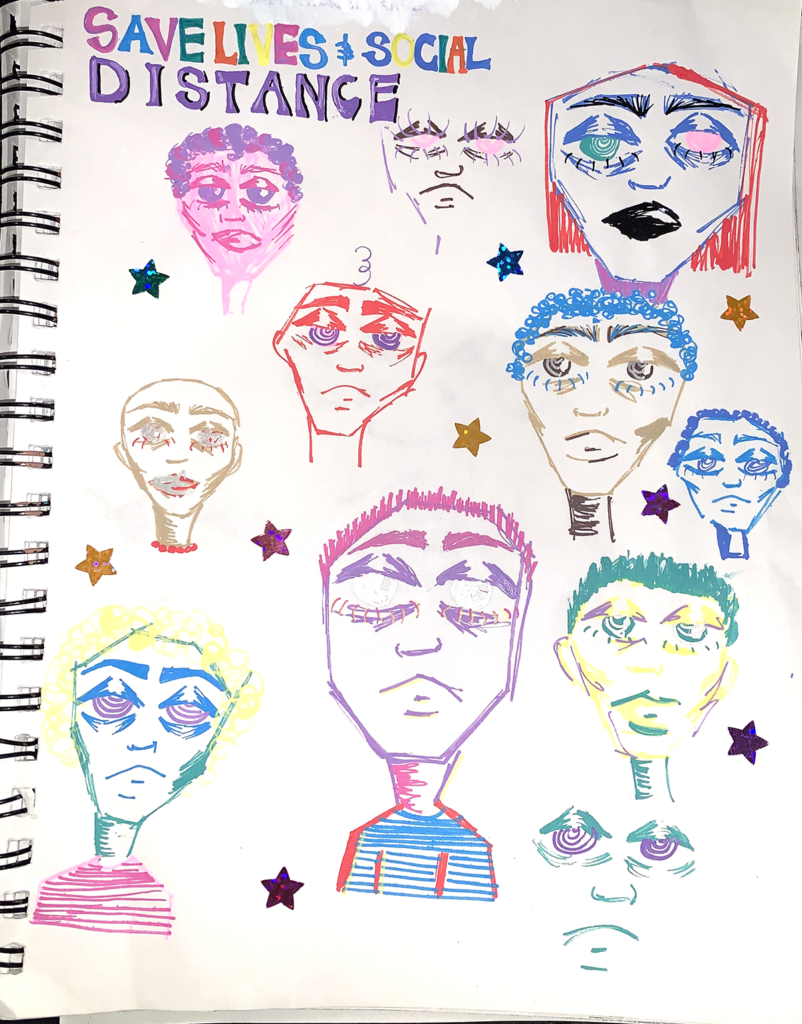
There are many benefits to combined visual journaling and goal setting. Students may be familiar with formalized goal setting in core subjects, so we must also exemplify its importance in art. Visual journaling allows students to build healthy habits around self-reflection by translating thoughts into images.
Conferencing with students about their SMART visual journals provides accountability and fosters student-teacher relationships. Students often share their personal goals and hopes for the future during conferences. Now that you know about their goal, they will be more likely to work toward it. SMART goals and visual journaling effectively build creative and reflective practices that will follow your students throughout their lives.
How do you implement visual journaling in your scope and sequence?
What is one pro of writing SMART goals that you think will benefit your students?
Magazine articles and podcasts are opinions of professional education contributors and do not necessarily represent the position of the Art of Education University (AOEU) or its academic offerings. Contributors use terms in the way they are most often talked about in the scope of their educational experiences.


